Reporter to Photog: ‘This Person Gives Me Bad Vibes’
Steve Crump, Black Journalist Exemplar, Dies at 65
Robbed: Univision Crew Covering Chicago Robberies
Jamila Robinson Named Top Editor at Bon Appétit
’63 March Falls to ‘Great Man’ Theory of History
Gizmodo Site Fires Editors, Uses AI Instead
MSNBC Grabs Diverse Viewers, Indictment Followers
New CNN Chief ‘Made Diversity an Absolute Priority’
. . . N.Y. Times Program Wants More Black Applicants
Short Takes: Maria Reeve, NABJ and COVID; end of “diversity statements” at Georgia’s public universities; Jerry Mitchell and Emmett Till case; Iliya Calderon; fast-growing Venezuelan Americans; Fredricka Whitfield and Karen Lincoln Michel; Jacksonville shootings and vilification of diversity; Year One in prison for Burundi journalist.
Support Journal-ismsDonations are tax-deductible.
After the incident, Orlando Rivera Martinez said, “I will stay with my family a few days, and I will go back to being ready and continue.” (video) (Credit: WTVJ/YouTube)
Reporter to Photog: ‘This Person Gives Me Bad Vibes’
“Video showed the shocking moments a gunman opened fire outside a courthouse in Puerto Rico in a deadly shooting that happened just feet away from journalists,” Niko Clemmons reported Wednesday, updated Thursday, for WTVJ in Miami.
“Orlando Rivera Martinez, a news reporter in Puerto Rico, said he and his photographer were getting ready to record something for a story in Caguas when he noticed a man.
” ‘I said to my photojournalist, “This person gives me bad vibes,” ‘ Martinez said.
“Seconds later, he saw the man shoot two people feet away from where he was standing. Eight gunshots were heard on camera. Martinez took off running, like so many other people.
‘”He took the pistol out of the backpack and boom, boom, boom, and people ran,” Martinez said. “I took cover, I thought about my family, my sons, my wife, I needed cover.’
“In the video, another journalist is seen trying to run away, but he falls. Martinez’s photographer is seen grabbing his camera. Then, officers come from behind holding their guns.
“Authorities arrested Roig George Karakozian after they said he shot and killed Ángel Calderón and Rosa Calderón, who were brother and sister.”
“Steve told the stories that needed to be told. And he seemingly knew everybody. His memory for names and old stories knew no bounds,” WBTV said. (Credit: WBTV/YouTube)
Steve Crump, Black Journalist Exemplar, Dies at 65
“Steve Crump, the relentlessly positive, long-serving WBTV reporter who became a cancer-awareness activist after a 2018 diagnosis that some feared would take his life much more quickly, died Thursday morning after a yearslong battle with the colorectal form of the disease,” Théoden Janes reported for the Charlotte Observer.
Crump’s station described him as “the conscience of a newsroom he loved and a community he served,” and the National Association of Black Journalists cited his “exceptional coverage of the Black community.” WBTV viewers left hundreds of condolences on the station’s Facebook page.
Janes continued, “He was 65, and spent far more than half his life — just shy of four decades — as a journalist at Channel 3 in Charlotte. WBTV announced Crump’s passing Thursday afternoon. The news came just over two months after Crump had hosted a ‘Five Year Cancer Survivors Brunch’ to thank family, friends and colleagues who had supported him through his journey, and for which he had mementos made that read:
“ ‘On July 22 2018 my cancer diagnosis continued with one doctor suggesting that I be placed in hospice. We found a successful second opinion and five years later we’re still here.’ Less than a week later, he shared a photo to his social media of himself with various tubes affixed to his chest with a caption announcing that he was ‘back in the pokey,’ as he’d grown fond of calling the hospital over the years. It would wind up serving as his final public appearance on any media format.”
An NABJ statement said, Crump “was NABJ’s inaugural Journalist of Distinction (2016), which honors an individual whose work has been extraordinary and significant to people in the African Diaspora. . . .
“Crump’s exceptional coverage of the Black community – including tragedies like the Mother Emmanuel Church shooting in Charleston, South Carolina – made him a beacon of light and a respected storyteller. His work in journalism went hand-in-hand with the cause for equality, social justice and human rights. . . . “
“Crump produced more than 20 documentaries on civil rights issues. His work included confronting racism through groundbreaking reporting, such as interviewing known Ku Klux Klan members and telling the story of the 1968 racist attack at historically Black South Carolina State University, where three students were shot to death and 30 others injured at the hands of the state highway patrol. . . .”
NABJ President Ken Lemon, of Charlotte’s WSOC-TV, said, “Steve was a personal friend and longtime mentor. He was always there to cheer me and so many others on. His impact on my life as a journalist and NABJ member is indescribable. A beloved member, Steve was the personification of resilience. His impeccable work reached beyond the newsroom and into many lives to whom he gave hope and inspiration. . . .”
- Jalon Hill, Q City Metro: Steve Crump, veteran TV journalist, has died
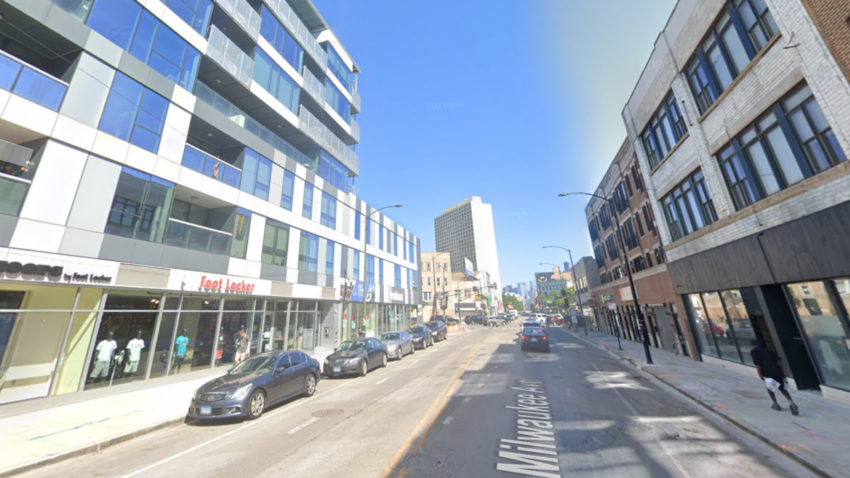
Robbed: Univision Crew Covering Chicago Robberies
“A Chicago television news crew reporting on a string of robberies ended up robbed themselves after they were accosted at gunpoint by three armed men wearing ski masks,” the Associated Press reported Tuesday.
“Spanish-language station Univision Chicago said a reporter and photographer were filming just before 5 a.m. Monday in Chicago’s West Town neighborhood when three masked men brandishing firearms robbed them, taking their television camera and other items.
“ ‘They were approached with guns and robbed. Mainly it was personal items, and they took a camera,’ Luis Godinez, vice president of news at Univision Chicago, told the Chicago Tribune.
“Godinez said the news crew was filming a story about robberies in the West Town community that was slated to run on the morning news. He said the footage they shot was in the stolen camera, and the story never made it on the air.
 “Chicago police identified the victims as a 28-year-old man and 42-year-old man. Police said the pair was outside when the three men drove up in a gray sedan and black SUV. After the armed robbers took items from the news crew they fled in their vehicles.
“Chicago police identified the victims as a 28-year-old man and 42-year-old man. Police said the pair was outside when the three men drove up in a gray sedan and black SUV. After the armed robbers took items from the news crew they fled in their vehicles.
“No injuries were reported and no one is in custody, police said.
“Godinez said Univision Chicago, the local TV affiliate of international media company TelevisaUnivision, is not disclosing the names of the reporter and photographer to protect their privacy. . . .”
Quinn Myers added for Block Club Chicago, “The reporter, who asked to remain anonymous, told Block Club on Monday he and his photographer were preparing to do a series of live shots about recent armed robberies in the area when they were robbed. The news crew was parked on Milwaukee Avenue just north of Ashland Avenue and Division Street.
“The fact that he and his photographer are now part of the larger story, the reporter said, is ‘total irony.’
“ ‘As a journalist, you never want to be the story, right? You’re reporting on the story but you never think that you can become the story. That’s not why we do this,’ he said. ‘So I guess it’s another reminder of how important it is to keep doing these stories and to keep pressure on our local authorities to try to prevent more events like that.’ ”
The Associated Press continued, ” ‘The robberies prompted the National Association of Broadcast Employees and Technicians Local 41, which represents TV photographers in Chicago, to warn about the growing safety threats to those who cover the news. . . . Raza Siddiqui, president of the union local, said . . . that some of the news stations affiliated with the union planned to take additional safety steps, including assigning security to some TV crews.”
In March, after Dylan Lyons, a reporter for Spectrum News 13, was murdered and photojournalist Jesse Walden was severely injured by a gunman while reporting from a crime scene in Orlando, Fla., the Radio Television Digital News Association again urged Congress to pass the Journalists Protection Act. First introduced in 2018, the bill would make it a federal crime to intentionally intimidate or cause bodily harm to a journalist or media organization in the course of newsgathering or reporting.
The bill would also allow the Justice Department to prosecute those who intimidate or assault journalists when local prosecutors decline to do so.
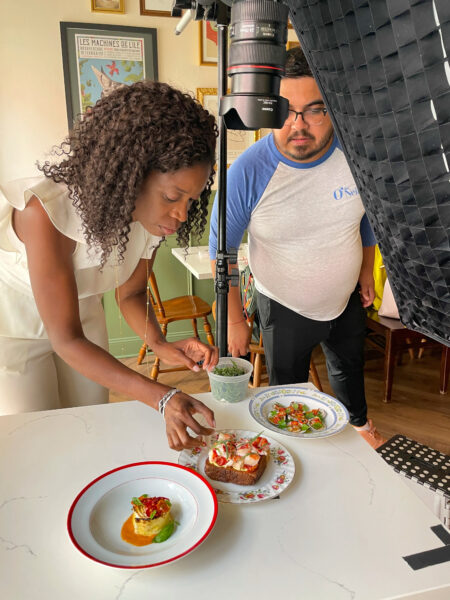
Jamila Robinson Named Top Editor at Bon Appétit
“Jamila Robinson, assistant managing editor for food and culture at The Inquirer, is leaving to become the editor-in-chief of Condé Nast’s food magazine, Bon Appétit and its culinary lifestyle and recipe website, Epicurious,” Elizabeth Wellington reported Monday for the Philadelphia Inquirer.
“Robinson will steer Bon Appétit’s editorial direction, brand strategy, audience development, and all content for Bon Appétit and Epicurious. She will report directly to Anna Wintour, Condé Nast’s chief content officer and global editorial director of Vogue. She will be based in Manhattan and start the role on Sept. 18.
“ ‘It’s not every day you get to meet an accomplished writer and editor who has led features departments and food organizations, is a competitive skater, classically trained violinist, teacher, world traveler, and is an absolute whiz in the kitchen,’ ” Wintour said in a statement Monday announcing the news. ‘Jamila is all of these things and more and I’m thrilled she’s coming to lead Bon Appétit and Epicurious.’
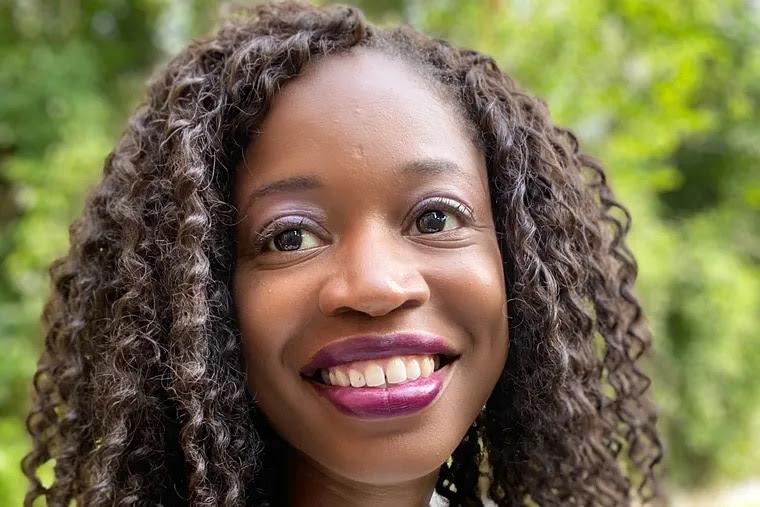 “Robinson (pictured) joined The Inquirer as its food editor in 2020 and was promoted to assistant managing editor of food and culture in 2021. She refocused its restaurant coverage, centering the experience of the communities who cook and build local food businesses. She reimagined the Dining Guide and revamped Let’s Eat, Philly!, The Inquirer’s restaurant and food culture newsletter. During her tenure, The Inquirer launched Taste Philly with Craig, a newsletter written by The Inquirer’s food critic that covers Philadelphia’s diverse food community. . . .
“Robinson (pictured) joined The Inquirer as its food editor in 2020 and was promoted to assistant managing editor of food and culture in 2021. She refocused its restaurant coverage, centering the experience of the communities who cook and build local food businesses. She reimagined the Dining Guide and revamped Let’s Eat, Philly!, The Inquirer’s restaurant and food culture newsletter. During her tenure, The Inquirer launched Taste Philly with Craig, a newsletter written by The Inquirer’s food critic that covers Philadelphia’s diverse food community. . . .
“ ‘Her approach to covering food is as social as it is sociological,’ said Gabriel Escobar, editor and senior vice president of The Inquirer. ‘It goes beyond recipe making and recipe tasting and has led to some of our [paper’s] most ambitious projects.’
“Robinson was the lead editor of The Inquirer’s Emmy-winning ‘Wildest Dreams: An Anthology of Black Inheritance,’ a multimedia project of photos, essays, and poems about Black joy presented by The Inquirer’s Black journalists. She helped lead The Inquirer’s diversity, equity, and inclusion training programs within the newsroom and company-wide.
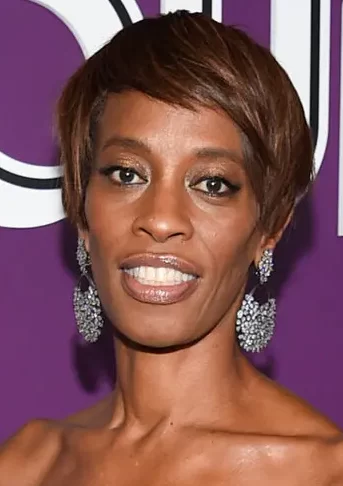 “ ‘She has this ability to turn a simple and vague idea into something concrete and relatable,’ Escobar said. ‘That’s a rare skill. When The Inquirer newsroom went through its own racial reckoning — that is still a work in progress — her leadership was especially important. She’s a thoughtful, measured person and when she speaks, people listen and listen carefully. That’s the mark of a real leader.’ ”
“ ‘She has this ability to turn a simple and vague idea into something concrete and relatable,’ Escobar said. ‘That’s a rare skill. When The Inquirer newsroom went through its own racial reckoning — that is still a work in progress — her leadership was especially important. She’s a thoughtful, measured person and when she speaks, people listen and listen carefully. That’s the mark of a real leader.’ ”
“Robinson will replace veteran book editor Dawn Davis (pictured, above) as editor at Bon Appétit. Condé Nast hired Davis in 2020 after a 2004 photo of her predecessor, Adam Rapoport, resurfaced on social media of Rapoport wearing a Halloween costume that made fun of Puerto Ricans. The issue shed light on Bon Appetit’s other racial problems, including pay disparity and lack of advancement opportunity for staffers of color. Davis was hired to address these issues head on, while advancing the magazine’s editorial cachet. . . .”
The Associated Press’ Gary Fields says in this AP video, “So you’re looking at thousands of people who had come to talk about inequality, to talk about jobs and fairness for all people in the United States. . . . This wasn’t just Black folks who showed up here. It was. You had white activists. You had people from all different ethnicities who had come to basically call on America to be who we say we want America to be.” (Credit: YouTube)
’63 March Falls to ‘Great Man’ Theory of History
The Associated Press did us all a favor Monday by reposting the lead story in its coverage of the original Aug. 28, 1963, March on Washington for Jobs and Freedom.
“In a great, dramatic demonstration, more than 200,000 Negroes and white sympathizers massed before the Abraham Lincoln Memorial today and demanded across-the-board abolition of race discrimination,” the AP’s Raymond J. Crowley wrote.
Crowley did not get to the Rev. Dr. Martin Luther King Jr. until the 14th paragraph.
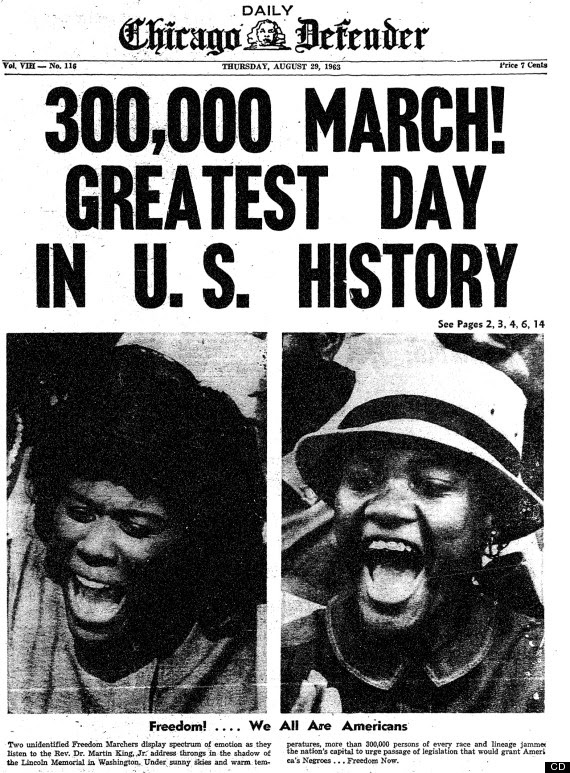 “Of all the speeches at the memorial, the one that drew the strongest applause was made by the Rev. Dr. Martin Luther King Jr., head of the Southern Christian Leadership Conference. Departing from his advance text, he said:
“Of all the speeches at the memorial, the one that drew the strongest applause was made by the Rev. Dr. Martin Luther King Jr., head of the Southern Christian Leadership Conference. Departing from his advance text, he said:
“ ‘I still have a dream, a dream deeply rooted in the American dream that one day this nation will rise up and live up to its creed: We hold those truths to be self-evident, that all men are created equal.’ ”
Fast-forward 60 years. Another AP story, headlined, “HBCU president lauds students, officer for stopping Jacksonville killer before racist store attack,” describes the 1963 event as “the Rev. Martin Luther King Jr.’s March on Washington.”
What a difference 60 years makes. King’s speech became so celebrated that to some it became a stand-in for the march itself, even by those in the media. An NPR headline writer told us, “Thousands march to mark the 60th anniversary of MLK’s ‘I Have a Dream’ speech,” not to mark the anniversary of the march.
The March on Washington’s self-described goals were jobs and freedom. It was the product of a coalition of civil rights groups, labor unions, religious organizations, and, as the original AP story said, “more than 200,000 Negroes and white sympathizers.”
“The idea for a March on Washington did not originate with Martin Luther King or the SCLC,” Aniko Bodroghkozy wrote in her “Equal Time: Television and the Civil Rights Movement,” from 2012, “but rather with seventy-four year old A. Philip Randolph, head of the influential International Brotherhood of Sleeping Car Porters, and Bayard Rustin, organizer extraordinaire.”
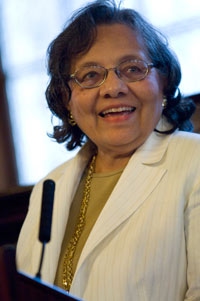 Jonathan Eig, author of the latest King biography, “King: A Life,” said in a C-SPAN interview airing over the weekend that he had approached Diane Nash (pictured), a founder of the Student Nonviolent Coordinating Committee. The National Urban League’s Marc Morial began Nash’s credentials this way: “In 1960, at age 22, she led the Nashville Sit-Ins, aimed at desegregating lunch counters. A few months later, she helped coordinate the Freedom Rides, riding interstate buses into the south to challenge the southern states’ failure to enforce a desegregation ruling by the Supreme Court. . . . “
Jonathan Eig, author of the latest King biography, “King: A Life,” said in a C-SPAN interview airing over the weekend that he had approached Diane Nash (pictured), a founder of the Student Nonviolent Coordinating Committee. The National Urban League’s Marc Morial began Nash’s credentials this way: “In 1960, at age 22, she led the Nashville Sit-Ins, aimed at desegregating lunch counters. A few months later, she helped coordinate the Freedom Rides, riding interstate buses into the south to challenge the southern states’ failure to enforce a desegregation ruling by the Supreme Court. . . . “
Eig said Nash refused to be interviewed, contending that the public emphasis on King was crowding out others who led the movement. She could have namechecked Whitney Young, Vernon Jordan, Roy Wilkins, James Farmer, James Forman, H. Rap Brown, Stokely Carmichael/Kwame Ture, John Lewis, Dorothy Height and Thurgood Marshall, for starters.
“King didn’t make the movement, the movement made King,” Eig quoted Nash as saying. Others have also used that characterization.
This circumstance is not the only example of the reach of the “great man” theory of history, defined as incorporating “at least three concepts: that history is made by individuals; that those individuals are mostly men; and that they are to be regarded as great – not just important but, apart from a few villains, admirable as well.”
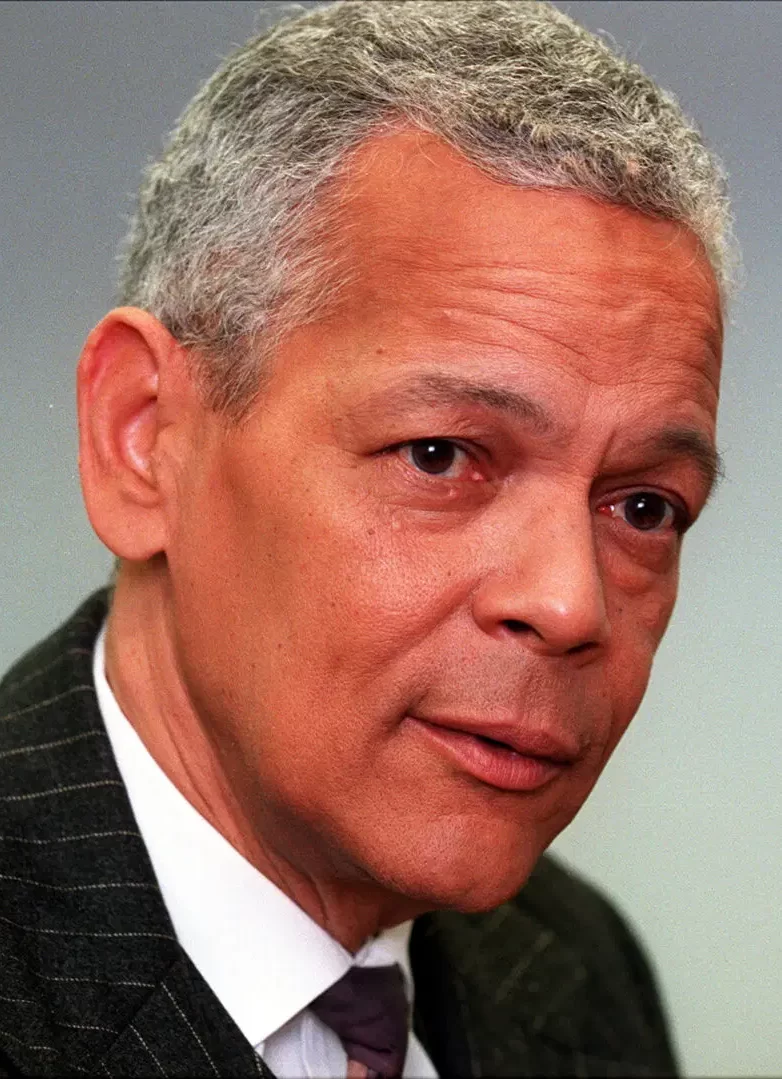 The late Julian Bond (pictured), the civil rights figure who served in the Georgia state Senate, helped start a Black newspaper in Atlanta (the Atlanta Inquirer) and taught for 20 years at the University of Virginia, used to quip that the civil rights movement was taught thus: “Rosa Parks sat down, Martin Luther King stood up and the white folks saved the day.”
The late Julian Bond (pictured), the civil rights figure who served in the Georgia state Senate, helped start a Black newspaper in Atlanta (the Atlanta Inquirer) and taught for 20 years at the University of Virginia, used to quip that the civil rights movement was taught thus: “Rosa Parks sat down, Martin Luther King stood up and the white folks saved the day.”
Nash, who is now 85, included the media in her criticism of how the civil rights story is told, and said the consequences affect how we look at ourselves.
“One thing that I think the history books, and the media, have gotten very wrong is portraying the movement as Martin Luther King’s movement, when in fact it was a people’s movement,” Nash told The New Yorker’s David Remnick in 2010.
“If people understood that it was ordinary people who did everything that needed to be done in the movement, instead of thinking, I wish we had a Martin Luther King now, they would ask, ‘What can I do?’ Idolizing just one person undermines the struggle.”
“Indeed,” Remnick added, “the struggle began with slave rebellions and fugitive churchmen; it has encompassed integrationists and nationalists, nonviolence and armed uprising, churchwomen and secular Third World liberationists, sharecroppers and intellectuals, heroes and eccentrics.”
- Herb Boyd with Cindy Hsu, WCBS-TV, New York: Looking back on 60 years since the March on Washington (video)
- PBS: “American Experience”: “Eyes on the Prize”: Groups During the American Civil Rights Movement (video)
- PBS: “Eyes on the Prize”: No Easy Walk (1961-1963) | March on Washington: MLK Jr. (video)
- PBS “Independent Lens”: The Powerbroker: Whitney Young’s Fight for Civil Rights (2013)
- Kenneth Quinnell, AFL-CIO: Pathway to Progress: The March on Washington for Jobs and Freedom (2019)
- Ajanet Rountree, in the words of Rabbi Joachim Prinz: Black-Jewish Alliance at the 1963 March on Washington
- SNCC Legacy Project: In Commemoration of the March on Washington – Reflecting on 60 Years

“Gizmodo en Español started after former owner, the now defunct Gawker Media, bought the site Guanabee in 2012, Insider reported then. The Spanish site represented the first international expansion of Gawker,” the Verge reported.
Gizmodo Site Fires Editors, Uses AI Instead
“Gizmodo owner G/O Media shut down and laid off editors of its Spanish-language site Gizmodo en Español and is now using AI to translate articles,” Emilia David reported Friday for The Verge.
“Matías S. Zavia, a writer at Gizmodo en Español, posted that the publication was shut down on August 29th and that it would now publish automatically translated articles. Gizmodo en Español previously had a small staff who wrote original stories and created Spanish-language adaptations of pieces from the English-language Gizmodo.”
“New articles posted on Gizmodo en Español now feature a disclaimer at the bottom in Spanish saying that its ‘contents have been automatically translated from the original. Due to the nuances of machine translation, there can be slight differences.’
“The transition to AI translation has not been smooth, though. Readers posted on X, formerly Twitter, that some articles will start in Spanish and then suddenly change to English. . . .
“Journalists at G/O Media’s different outlets expressed dismay with the decision to publish AI-generated stories without their knowledge, and their union, GMG Union, asked readers not to click on any AI-written news. . . .”
G/O Media properties are Gizmodo; The Root (Black news and culture); The A.V. Club; The Onion; Deadspin; Jezebel; Jalopnik (car culture); Kotaku (gaming); Lifehacker (lifestyle); The Takeout (food and drink); Quartz (business); and The Inventory (ecommerce), Variety has reported.
Vice President Kamala Harris sits down in August with MSNBC’s the Rev. Al Sharpton for a wide-ranging discussion about civil rights, voter suppression and the state of democracy ahead of 2024. (Credit: MSNBC/YouTube)
MSNBC Grabs Diverse Viewers, Indictment Followers
MSNBC, which has “emerged as the network of choice for viewers looking for coverage of [former president Donald] Trump’s criminal charges,” as Vanity Fair reported, in August “was the #1 network across all of cable among Black, Hispanic, and Asian viewers,” the network announced Tuesday.
“MSNBC has ranked #1 in cable news among Black viewers for 31 straight months and among Hispanic and Asian viewers for 5 straight months,” a news release continued. The Native American sample size was too small.
“MSNBC is home to the 10 highest-rated cable news programs among Black Americans. Across all of cable, MSNBC had 8 of the Top 20 programs among Black viewers in August: ‘The Rachel Maddow Show,’ ‘The ReidOut with Joy Reid,’ ‘The Beat with Ari Melber,’ ‘The Last Word with Lawrence O’Donnell,’ ‘All In with Chris Hayes,’ ‘Alex Wagner Tonight,’ ‘Deadline: White House,’ and ‘The 11th Hour with Stephanie Ruhle.’ Additionally, MSNBC’s ‘PoliticsNation with Al Sharpton‘ had the highest concentration of Black viewers (41%) of any program on cable news. . . .”
.
Meanwhile, Charlotte Klein reported Monday for Vanity Fair that “MSNBC has emerged as the network of choice for viewers looking for coverage of Trump’s criminal charges. The timing of Trump’s arrest in Georgia — Thursday night — didn’t correspond with Maddow’s regular Monday slot, but the network brought her on anyway; it was an evening ripe for the heavy hitters, after all.
“The tactic seems to be working. The network has seen a bump in ratings recently, reportedly beating Fox News in prime-time ratings for a full week in early June amid coverage of Trump’s second indictment, on charges related to classified documents. The network continued to bear the fruits of Trump’s legal woes earlier this month, which has been MSNBC’s most-watched in more than two years. . . .”
- Emmanuel Felton, Fenit Nirappil and Camila DeChalus, Washington Post: Along Trump’s journey to jail, Black Atlanta residents mix outrage with pride
- Lisa Mascaro, Associated Press: Conservative groups draw up plan to dismantle the US government and replace it with Trump’s vision
New CNN Chief ‘Made Diversity an Absolute Priority’
 Mark Thompson (pictured), a former top executive at the New York Times Co. and the BBC, will be CNN’s next chairman and editor in chief, starting Oct. 9, the network announced Wednesday.
Mark Thompson (pictured), a former top executive at the New York Times Co. and the BBC, will be CNN’s next chairman and editor in chief, starting Oct. 9, the network announced Wednesday.
Dean Baquet, former executive editor of the Times, called Thompson “the perfect hire” for CNN, John Koblin, Benjamin Mullin and Katie Robertson reported Wednesday for the Times.
“ ‘ He understands change, which is the most important quality for whoever they chose as a leader — someone who understands what things are going to have to change,’ Mr. Baquet said. ‘Newspapers were a little bit of a learning curve for Mark just because he had never been at a newspaper. But this is his world. He’ll be very comfortable in that world. ‘ ”
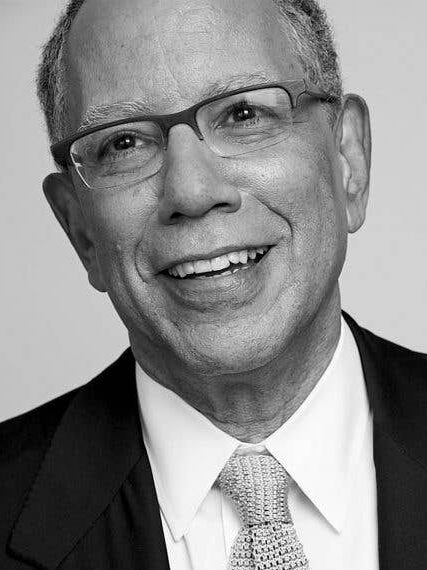 Moreover, Baquet (pictured) told Journal-isms, Thompson and Publisher A.G. Sulzberger “made diversity an absolute priority here and it shows in the newsroom and on the business side.”
Moreover, Baquet (pictured) told Journal-isms, Thompson and Publisher A.G. Sulzberger “made diversity an absolute priority here and it shows in the newsroom and on the business side.”
Erik Wemple, Washington Post media writer, wrote in 2016 that Thompson, “in a presentation before a gathering of managers on the business and news sides of the newspaper,” “identified three areas toward which diversity efforts must be channeled: recruitment, hiring and promotion. Supervisors who fail to meet upper management’s requirements in recruiting and hiring minority candidates or who fail to seek out minority candidates for promotions face some stern consequences: They’ll be either encouraged to leave or be fired.’ “
Thompson said, “I couldn’t be more excited about the chance to join CNN after years of watching it and competing against it with a mixture of admiration and envy. The world needs accurate, trustworthy news now more than ever and we’ve never had more ways of meeting that need at home and abroad. Where others see disruption, I see opportunity. I can’t wait to roll up my sleeves and get down to work with my new colleagues to build a successful future for CNN.”
As Alex Weprin wrote Wednesday for the Hollywood Reporter, Thompson “will take over the cable news channel at a difficult moment, a few months after the firing of Chris Licht, who was ousted in June after a tumultuous year at the helm of the company, and with the cable TV business that built CNN into a global brand now firmly in decline. . . .”
. . . N.Y. Times Program Wants More Black Applicants
When Dean Baquet was about to step aside last year as executive editor of the New York Times, publisher A.G. Sulzberger had an idea.
“When you hit 65 years, the tradition is the executive editor steps down. I’ve been editor for eight years, which shockingly is like the second- or third-longest run in the history of the paper,” Baquet told the Journal-isms Roundtable last October.
 “When the publisher came to me and said, ‘Look, we don’t really want you to leave and we have this idea. You care deeply about investigative reporting; you also care deeply about diversity. Can we come up with something that marries those two? (pictured: Shalina Chatlani, fellow)
“When the publisher came to me and said, ‘Look, we don’t really want you to leave and we have this idea. You care deeply about investigative reporting; you also care deeply about diversity. Can we come up with something that marries those two? (pictured: Shalina Chatlani, fellow)
“So, essentially what we’re going to do is, we’re gonna pick a group of fellows every year to do investigative projects. Probably in the first year, it’ll be, say, 10, but I hope it grows over time, and people will pitch investigative stories to us. We will pay their salaries. We will edit their stories. We’ll publish them in The New York Times and wherever local news organizations they’re from.
“Freelancers can apply, people who are not connected to a news organization can apply. . . . I took a month off, so what I’ve been doing in the months since is visiting some newsrooms talking to people just to sort of get a sense of what people want from this kind of program.”
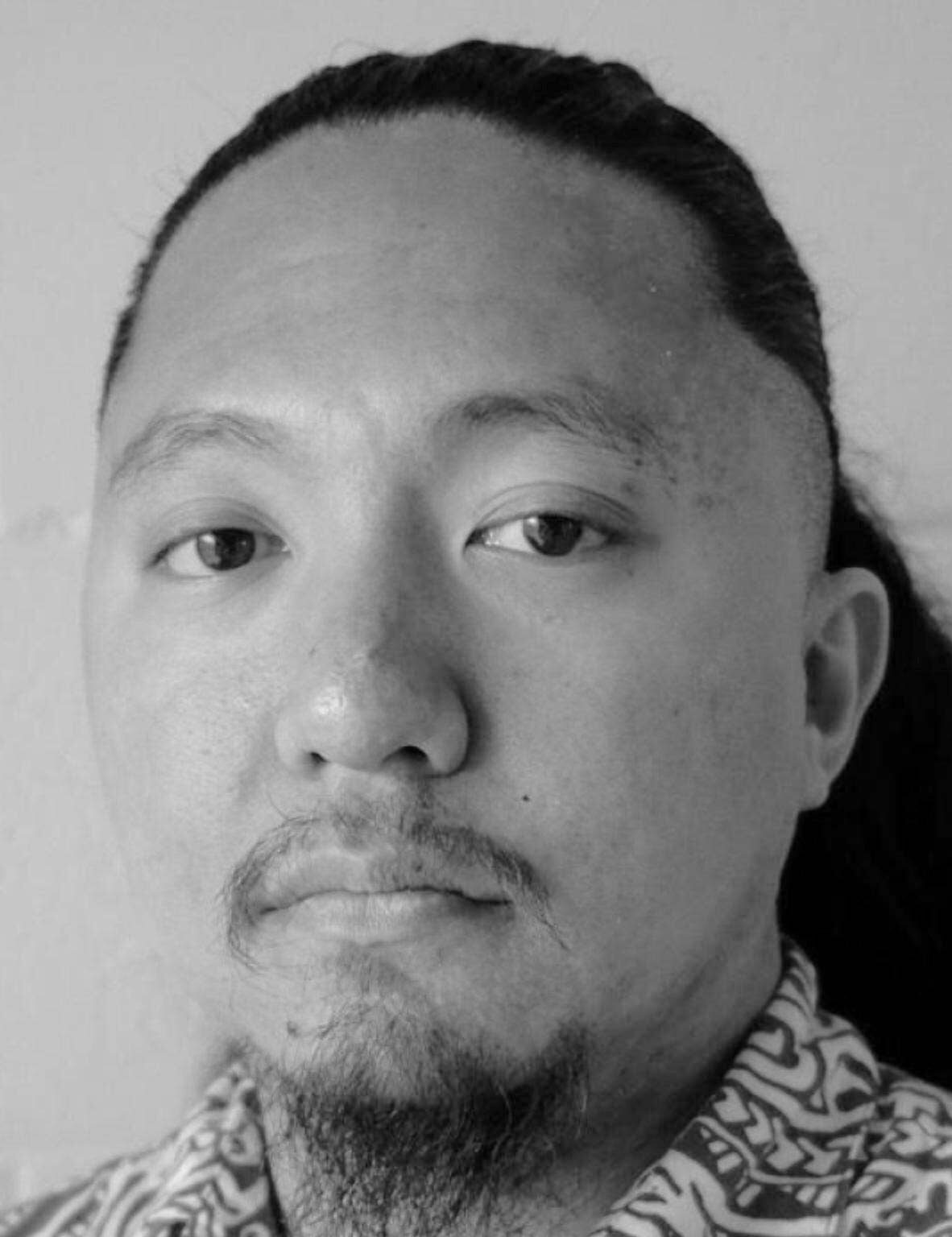 The first class was introduced in March. Baquet, the first Black top editor at the Times, messaged Journal-isms Friday that “the class was quite diverse but we had very few black applicants and none of the fellows are black.” (pictured: Blaze Lovell, fellow)
The first class was introduced in March. Baquet, the first Black top editor at the Times, messaged Journal-isms Friday that “the class was quite diverse but we had very few black applicants and none of the fellows are black.” (pictured: Blaze Lovell, fellow)
However, he added, “We have done a lot on brutal Mississippi sheriffs, conditions at a Wisconsin prison, etc. And more to come.”
You can see some of the work here.
And the first fellowship class here.
More information for potential applicants.
Short Takes
 “For what it’s worth, I got COVID at the convention, too,” Maria Reeve, (pictured), who became the first Black journalist to become the top editor at the Houston Chronicle, messaged Journal-isms on Tuesday. In May, Reeve was promoted to vice president-editor for content initiatives for Hearst Texas. She was referring to the National Association of Black Journalists convention Aug. 2-6 in Birmingham, Ala., where several journalists, including two award winners and a past NABJ president, caught the virus. “Second year in a row. Haven’t had covid any other times except post-convention. I would be interested in knowing how many people contracted it and what the plans are for next year.” As of Friday, NABJ has not responded to a request for comment.
“For what it’s worth, I got COVID at the convention, too,” Maria Reeve, (pictured), who became the first Black journalist to become the top editor at the Houston Chronicle, messaged Journal-isms on Tuesday. In May, Reeve was promoted to vice president-editor for content initiatives for Hearst Texas. She was referring to the National Association of Black Journalists convention Aug. 2-6 in Birmingham, Ala., where several journalists, including two award winners and a past NABJ president, caught the virus. “Second year in a row. Haven’t had covid any other times except post-convention. I would be interested in knowing how many people contracted it and what the plans are for next year.” As of Friday, NABJ has not responded to a request for comment.
- “Georgia’s public universities can no longer require job applicants to submit a diversity statement, prompting schools to revise faculty hiring practices,” Vanessa McCray reported Wednesday for the Atlanta Journal-Constitution. “The University System of Georgia in July issued a new employee recruitment policy barring such statements, typically one-to-two-page documents in which applicants describe their understanding of diversity and detail experiences and goals related to advancing it. Another revised human resources policy states that mandatory employee training cannot include diversity statements. The University System pointed to language approved in the spring by the Georgia Board of Regents as the trigger for the prohibition. . . .” The university is the home of the Grady College of Journalism and Mass Communication.
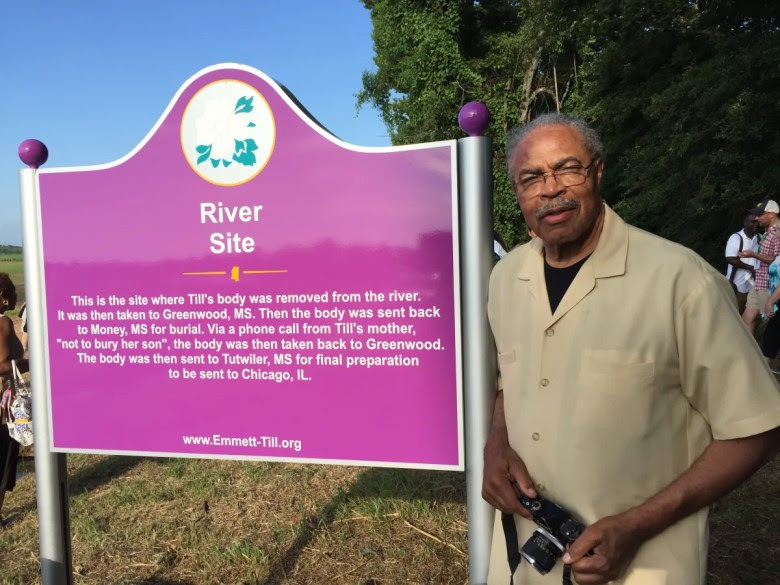
- Remember when Carolyn Bryant Donham, the white woman whose accusation led to the 1955 lynching of Black teen Emmett Till in Mississippi, reportedly said she actually had lied about the accusation? All the evidence points to falsehoods by the writer who said Donham told him she had lied. Jerry Mitchell, longtime investigative journalist specializing in civil rights killings, breaks it down for Mississippi Today under the headline, “The Emmett Till lynching has seen more than its share of liars. Is Tim Tyson one of them?“
 “Fox News Media’s Stuart Varney and Dana Perino and UNIVISION’s Ilia Calderón (pictured) are set to co-moderate the second Republican primary debate, the networks said Wednesday,” Erin Doherty reported for Axios. “The big picture: The debate is scheduled for Sept. 27 at the Ronald Reagan Presidential Library in Simi Valley, California. . . . Calderón, who is from Colombia, is the co-anchor of Univision’s flagship weekday evening newscast, NOTICIERO UNIVISION.”
“Fox News Media’s Stuart Varney and Dana Perino and UNIVISION’s Ilia Calderón (pictured) are set to co-moderate the second Republican primary debate, the networks said Wednesday,” Erin Doherty reported for Axios. “The big picture: The debate is scheduled for Sept. 27 at the Ronald Reagan Presidential Library in Simi Valley, California. . . . Calderón, who is from Colombia, is the co-anchor of Univision’s flagship weekday evening newscast, NOTICIERO UNIVISION.”
- “Increasing shares of Latinos in the United States speak English proficiently, have gained U.S. citizenship and have lived in the country for at least a decade, according to a new Pew Research Center analysis,” Alejandra Molina reported Aug. 22 for the Los Angeles Times. “As patterns of immigration from Latin America change, Venezuelans have now become the fastest-growing Latino group in the U.S., according to the report, which also noted that immigrants make up a declining share of Latinos in the country. . . .”
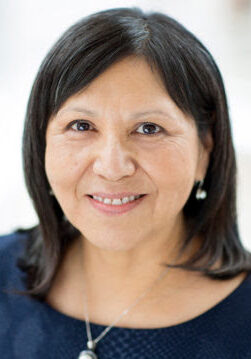 The Women’s Media Center is honoring Fredricka Whitfield, CNN News anchor, with the WMC Pat Mitchell Lifetime Achievement Award, and Karen Lincoln Michel (pictured), president of ICT, formerly Indian Country Today, and president and CEO of IndiJ Public Media, with the WMC Carol Jenkins Award, at the 2023 Women’s Media Awards Oct. 19 in New York.
The Women’s Media Center is honoring Fredricka Whitfield, CNN News anchor, with the WMC Pat Mitchell Lifetime Achievement Award, and Karen Lincoln Michel (pictured), president of ICT, formerly Indian Country Today, and president and CEO of IndiJ Public Media, with the WMC Carol Jenkins Award, at the 2023 Women’s Media Awards Oct. 19 in New York.
- “Five years to the day since Jacksonville’s last high-profile mass shooting, and just one day before the 63rd anniversary of the city’s most infamous episode of mass racial violence, Ax Handle Saturday, the [latest mass] killer, a white man from Clay County in his 20s, left multiple manifestos detailing his hatred of Black people, donned his tactical gear and wielded his swastika-covered rifle, and stalked the vicinity of Edward Waters University, Florida’s oldest historically Black college,” columnist Nate Monroe of the Florida Times-Union wrote Sunday, updated Tuesday. “He ultimately entered a nearby Dollar General, killed two Black men and one Black woman, and then killed himself. . . . Wars on ‘woke’ and villainizing ‘diversity, equity and inclusion’ and peddling the fictitious chivalry of the nation’s slave-holding founders — it is catnip for awful people with awful ideas. And these words sometimes become deeds. . . .”
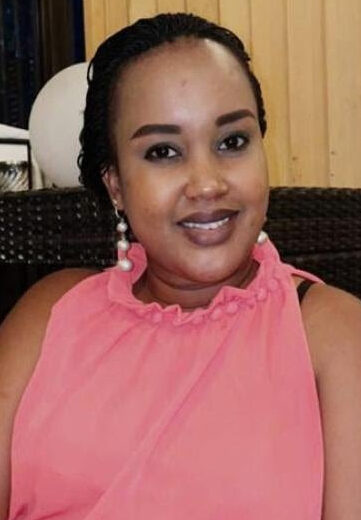 Burundian authorities should immediately and unconditionally release and quash the conviction of journalist Floriane Irangabiye (pictured), who was arbitrarily arrested on August 30, 2022, and is currently serving a 10-year prison sentence for criticizing the government, Amnesty International, the Burundi Human Rights Initiative, the Committee to Protect Journalists and Human Rights Watch said Tuesday.
Burundian authorities should immediately and unconditionally release and quash the conviction of journalist Floriane Irangabiye (pictured), who was arbitrarily arrested on August 30, 2022, and is currently serving a 10-year prison sentence for criticizing the government, Amnesty International, the Burundi Human Rights Initiative, the Committee to Protect Journalists and Human Rights Watch said Tuesday.
To subscribe at no cost, please send an email to journal-isms+subscribe@groups.io and say who you are.
Facebook users: “Like” “Richard Prince’s Journal-isms” on Facebook.
Follow Richard Prince on Twitter @princeeditor
Richard Prince’s Journal-isms originates from Washington. It began in print before most of us knew what the internet was, and it would like to be referred to as a “column.” Any views expressed in the column are those of the person or organization quoted and not those of any other entity. Send tips, comments and concerns to Richard Prince at journal-isms+owner@
View previous columns (after Feb. 13, 2016).
View previous columns (before Feb. 13, 2016)
- Diversity’s Greatest Hits, 2018 (Jan. 4, 2019)
- Book Notes: Is Taking a Knee Really All That? (Dec. 20, 2018)
- Book Notes: Challenging ’45’ and Proudly Telling the Story (Dec. 18, 2018)
- Book Notes: Get Down With the Legends! (Dec. 11, 2018)
- Journalist Richard Prince w/Joe Madison (Sirius XM, April 18, 2018) (podcast)
- Richard Prince (journalist) (Wikipedia entry)
- February 2018 Podcast: Richard “Dick” Prince on the need for newsroom diversity (Gabriel Greschler, Student Press Law Center, Feb. 26, 2018)
- Diversity’s Greatest Hits, 2017 — Where Will They Take Us in the Year Ahead?
- Book Notes: Best Sellers, Uncovered Treasures, Overlooked History (Dec. 19, 2017)
- An advocate for diversity in the media is still pressing for representation, (Courtland Milloy, Washington Post, Nov. 28, 2017)
- Morgan Global Journalism Review: Journal-isms Journeys On (Aug. 31, 2017)
- Diversity’s Greatest Hits, 2016
- Book Notes: 16 Writers Dish About ‘Chelle,’ the First Lady
- Book Notes: From Coretta to Barack, and in Search of the Godfather
- Journal-isms’ Richard Prince Wants Your Ideas (FishbowlDC, Feb. 26, 2016)
- “JOURNAL-ISMS” IS LATEST TO BEAR BRUNT OF INDUSTRY’S ECONOMIC WOES (Feb. 19, 2016)
- Richard Prince with Charlayne Hunter-Gault, “PBS NewsHour,” “What stagnant diversity means for America’s newsrooms” (Dec. 15, 2015)
- Book Notes: Journalists Follow Their Passions
- Book Notes: Journalists Who Rocked Their World
- Book Notes: Hands Up! Read This!
- Book Notes: New Cosby Bio Looks Like a Best-Seller
- Journo-diversity advocate turns attention to Ezra Klein project (Erik Wemple, Washington Post, March 5, 2014)

